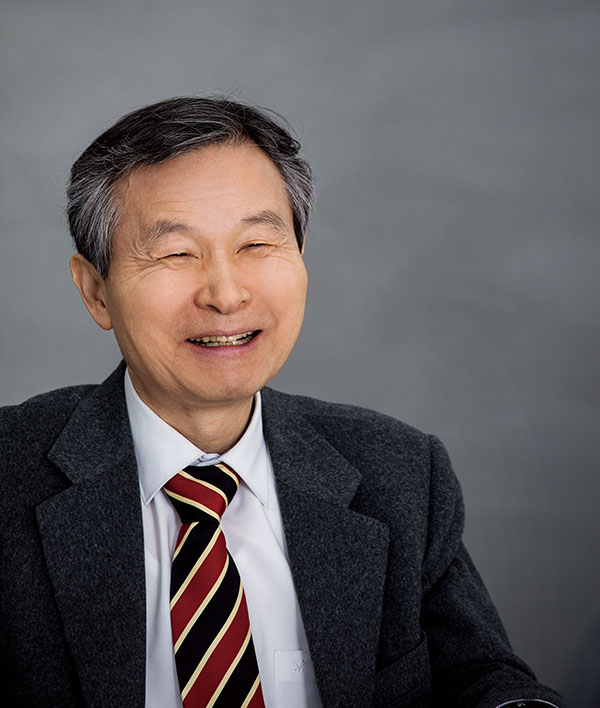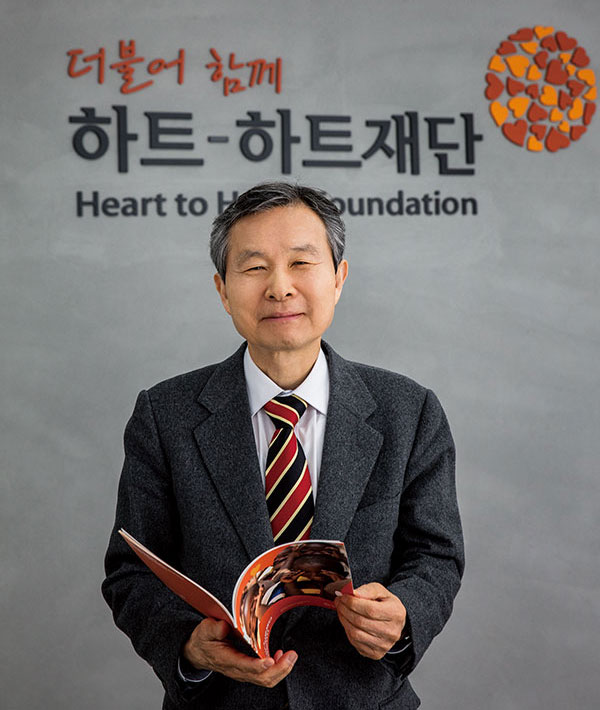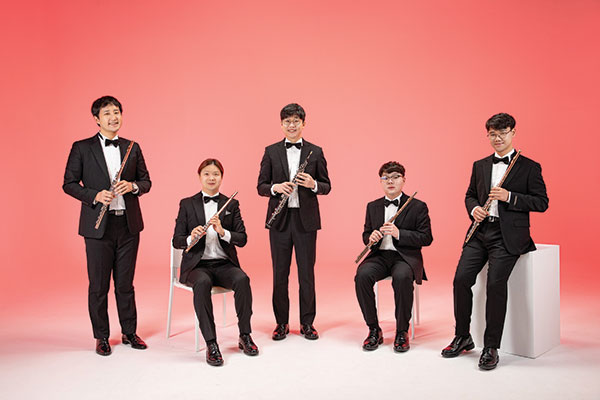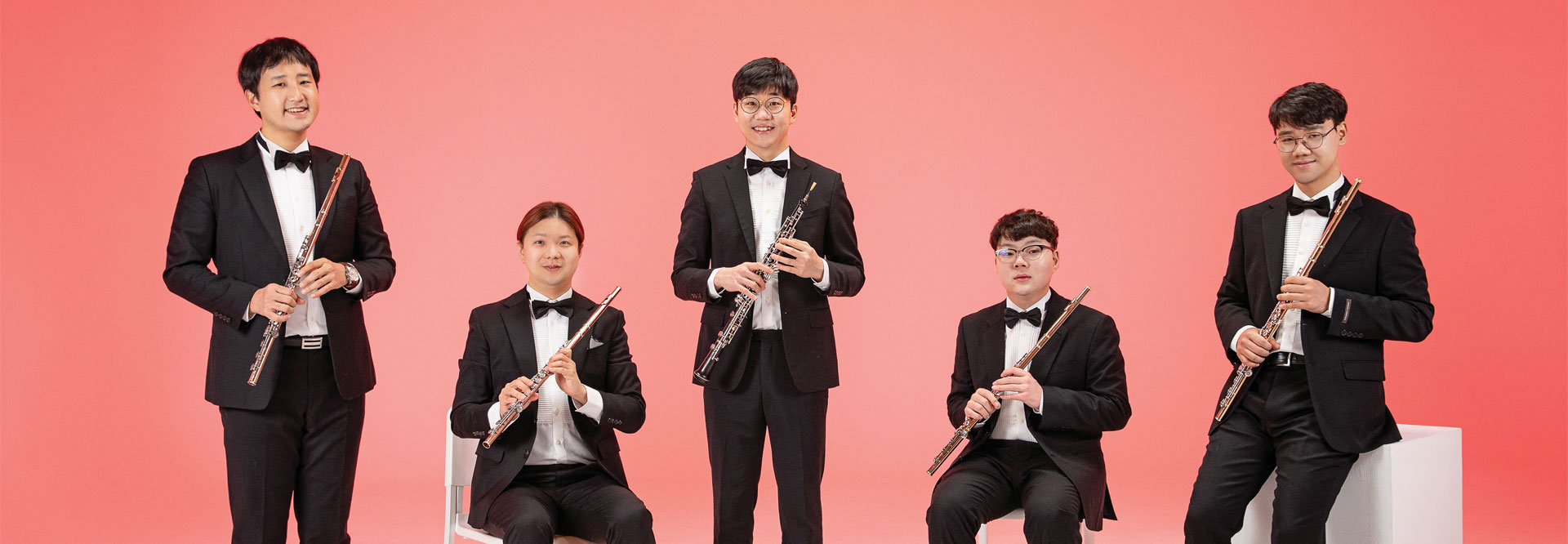in Issue & Trend
The Power of Music
in Achieving Bold Challenges
Jee-chul Oh, President of Heart to Heart Foundation

The Heart to Heart Orchestra is an affiliated organization under the Heart to Heart Foundation. It is a professional culture and arts organization whose musicians are composed of persons with developmental disabilities. The organization supports independence for persons with developmental disabilities. Since its founding in 2006, the orchestra has performed at prestigious venues such as Carnegie Hall in New York, the John F. Kennedy Center in Washington, D.C., and the Salle Gaveau in Paris. We spoke with Jee-chul Oh, Chairman of the Heart to Heart Foundation, about the power of music and the value of an inclusive society.
By Hye-won Kim
Photographer Gyu-cheol Shin
Congratulations on the Heart to Heart Foundation’s 37th anniversary and the Heart to Heart Orchestra’s 19th anniversary this March. Could you briefly introduce the foundation?
The Heart to Heart Foundation was established in 1988 as a global NGO with the mission of empowering marginalized communities, improving their quality of life, and driving social change. Internationally, we focus on eye health systems through specialized international development cooperation projects. Domestically, we promote welfare programs in fields such as culture and education. In particular, the Heart to Heart Orchestra has grown into a leading orchestra for individuals with developmental disabilities in Korea and is recognized as a model for cultural welfare.
Why did you choose to establish an orchestra among the various forms of cultural and artistic organizations?
You may have occasionally heard of individual musicians with developmental disabilities, but an orchestra composed entirely of individuals with developmental disabilities is virtually unheard of anywhere in the world. That’s because of the general characteristics of developmental disabilities—lower intelligence, concentration, and social skills compared to neurotypical individuals. Many people with developmental disabilities tend to retreat into their own world, making social interaction difficult. In other words, a collaborative performance involving multiple musicians, which requires harmony and coordination, would seem almost impossible. However, the foundation’s founder, Chairwoman In-sook Shin, was determined to challenge that perception. As unrealistic as forming a professional orchestra seemed, she said, “Let’s give it a try anyway.” Now I can confidently say that the 19-year journey, though often difficult, has been immensely worthwhile.
The Heart to Heart Orchestra has performed on stage over 1,300 times since its founding. What was the journey like behind the scenes?
At the time of its founding, the orchestra had only eight members—none of whom could play an instrument. Some couldn’t even read music. We had to start from scratch, building everything step by step. Most members struggled even with one hour of daily practice, and the idea of performing on stage before an audience seemed unthinkable.
Nothing was easy, but everyone—musicians, conductors, foundation staff, and even the parents of the members—worked incredibly hard toward a shared goal. But most of all, it was the orchestra members themselves who endured the greatest challenges. It’s impossible to describe the countless trial-and-error attempts they went through, from learning individual notes to performing a piece smoothly.
They practiced individually and also rehearsed as a group more than twice a week. The patience and effort sustained over 19 years have made the orchestra what it is today. For example, it took a full year to prepare the piece With Love for our first regular concert.
You used the phrase “bold challenge” earlier. What motivated you to take on this challenge?
It’s the “Can Do Spirit”—the confidence that we can do it. Honestly, I think this applies not only to our orchestra but to any challenge in life. Challenges often seem reckless at first. But isn’t the very existence of difficulty what makes a challenge worthwhile?
We’ve walked this path with unwavering faith in ourselves and in each other. That faith turned into confidence, and that confidence became the foundation for our current success. Now, we create beautiful harmonies with the pride of being the best.
What is the most important aspect of running the Heart to Heart Orchestra?
The happiness of the members comes first. Although the foundation established the orchestra, we can’t force the members to participate. They need to feel a genuine interest in playing their instruments and show a willingness to participate. Forced practice might lead to short-term success but it cannot sustain long-term growth. More important is each member’s joyful experience when performing on stage.
The other key aspect is independence through music. I hope our members will be recognized not as “musicians with developmental disabilities” but simply as “professional musicians.” As each individual stands on stage as a proud and accomplished musician, financial independence will come naturally. The Heart to Heart Orchestra is preparing for another bold challenge. We are launching Heart to Heart Art & Culture to enable all members to work as salaried professional musicians. Our goal is to provide developmental disability artists with stable and sustainable working environments so they can pursue independent lives. Supporting the independence and social contribution of people with developmental disabilities is both the foundation’s vision and its reward.
Since becoming chairman of the Heart to Heart Foundation in 2018, you’ve witnessed seven years of the orchestra’s growth. What was the most memorable moment?
In 2024, during the Paris Paralympics, we conducted a European tour. We were officially recognized as a cultural event by the Paris Olympics Organizing Committee and awarded the Cultural Olympiad1 label. We were also selected as part of Korea’s overseas cultural center program, helping to promote Korean culture and arts abroad. One particularly memorable day was our performance at the historic Salle Gaveau, which has a 120-year history. We played in front of an audience of 1,200 people, including diplomats, embassy staff, UNESCO officials, and French cultural and media figures. The highlight was our performance of the French national chanson La Vie En Rose—the audience’s response was electric. We even performed the French national anthem as an encore.
- 1) A certification awarded by the Paris Organizing Committee for the Olympic Games to organizations that present programs combining art and sports.
The Heart to Heart Orchestra’s ensemble also performed at the FKI’s Wednesday Lobby Concert last December. Could you please share your thoughts on forming a connection with the FKI?
Yes, the Heart Wind Quintet performed beautifully at the FKI Tower’s lobby. We were grateful for the opportunity to introduce our music to corporate leaders working to build public trust in the business world. Thanks to that performance, our members were able to take another step toward becoming professional musicians.

What positive impact do you think the Heart to Heart Orchestra has on society?
We challenge prejudice and push boundaries through the power of music. The Heart to Heart Orchestra is spreading positive awareness about disabilities and presenting a new model for cultural welfare. Through our music, we strive to create a world free from discrimination—a world where everyone is respected and included. In fact, many disability-focused artistic groups across the country have taken inspiration from the Heart to Heart Orchestra. That brings both pride and a sense of responsibility—we feel we have to keep doing even better.
What kind of music will the Heart to Heart Orchestra play in the future?
We have different repertoires depending on the audience and purpose of each performance. We aim to expand our repertoire further and challenge ourselves with more complex pieces. For example, in our 2024 regular concert, we performed all four movements of Dvořák’s Symphony No. 8—a performance lasting about 40 minutes. It was an incredible challenge, but our members, after countless rehearsals, pulled it off. Now they’re eager to tackle even more difficult pieces. We hope that one day, we’ll be able to take spontaneous requests from the audience during performances. We have a concert scheduled this August in Osaka to celebrate the 60th anniversary of Korea-Japan diplomatic normalization. In December, we will hold a regular concert at the Seoul Arts Center. Our ultimate goal is to meet more audiences in more places and build a reputation as the best orchestra in the world.

From left to right: Dong-gyun Kim, Yeong-su Lee, Jun-beom Lee, Seon-gyun Im, Hoon Choi
Q. What are the challenging moments when performing with other instruments?
A.
Seon-gyun Im│Flute Unlike a solo performance where I just need to focus on my own playing, in an orchestra, there are moments when my part needs to stand out and other times when I need to support other parts. I have to listen carefully to the sound of the player next to me and stay focused on the conductor’s direction.
Hoon Choi│Flute That’s why it’s important to work on harmonizing the sounds based on the sheet music.
Jun-beom Lee│Oboe If we keep repeating and refining it over and over, there’s a moment when the harmony clicks perfectly.
Q. What motivates you to continue participating in the orchestra?
A.
Yeong-su Lee│Flute The process of creating grand and beautiful music through the blend of various instruments is enjoyable.
Dong-gyun Kim│Flute The time spent connecting with fellow performers through music makes me happy.
Q. How did it feel to be invited to the FKI Wednesday Lobby Music Concert?
A.
Jun-beom Lee│Oboe I enjoyed the atmosphere where the performers and the audience could exchange emotions and engage with each other.
Yeong-su Lee│Flute I felt very proud as a performer because I could sense the thoughtful preparation of the organizers and the warm reception from the audience.
Hoon Choi│Flute I’m proud that we finished our last performance of 2024 without feeling nervous.
Q. Any message for your ensemble teammates?
A.
Dong-gyun Kim│Flute Let’s keep working hard as happy performers!
Seon-gyun Im│Flute I love all our orchestra members because no part can be left out. Let’s keep going strong!
